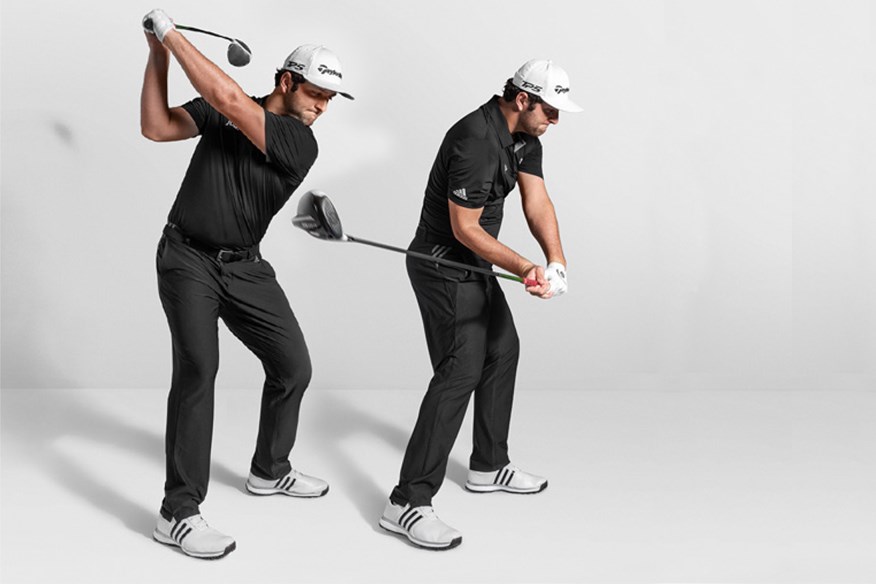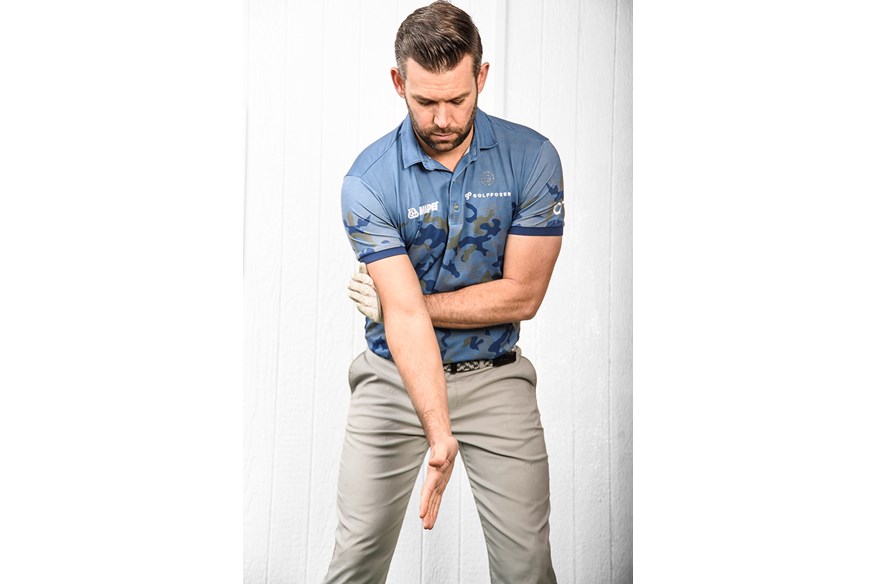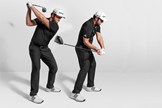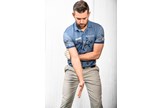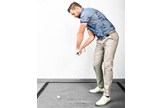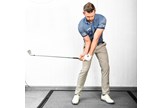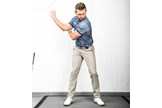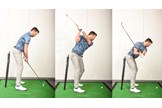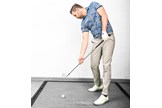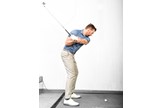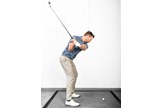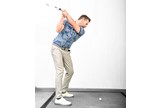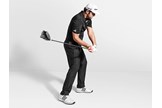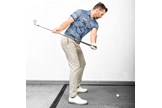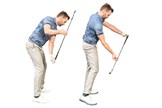The key move all good golfers make (and you can practise it at home)
Last updated:
Good golfers all possess their own, individual swings. But there is one, vital move they ALL make. Anyone can do it… but most of us don’t. We’ll show you how.
There is no such thing as the perfect golf swing. The evidence smacks us in the face every day. Compare the fluid, elastic action of Dustin Johnson with the shorter, fast-twitch pounding of Jon Rahm; or the incredible, power-packed loop of Matthew Wolff with the compact orthodoxy of Tiger Woods.
It’s Christmas! The best gifts for golfers
Every day, golf’s elite proves to us that the way to excellence is by pursuing your own swing, not some mythical model of one. And yet, scratch beneath the surface of this and an intriguing pattern emerges.
However idiosyncratic a good player’s action gets, it inevitably finds its way back to textbook a beat before impact. Some call it the slot, others the delivery position. But here, halfway through the downswing, is a moment in the swing where arms drop into place and angles are gathered as the golfer prepares to deliver the club with immense force and accuracy. It is the one moment in the swing where the actions of really good golfers align.
Here, by looking at the body, arms, and club, we will discover what those common denominators are… and how you can achieve them.
Related: Best Home Golf Practice Nets
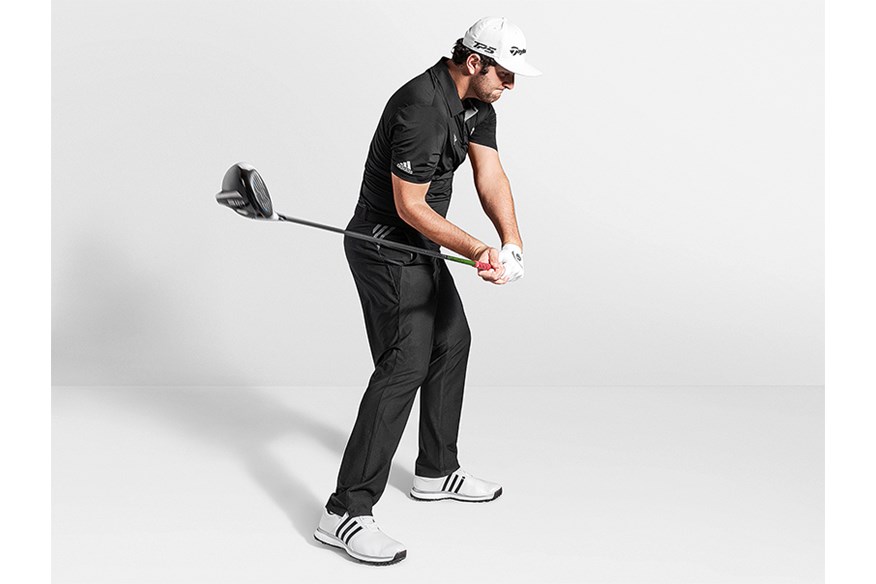
The perfect delivery position
So how do good players get from completely different positions at the top of the swing to find a much more aligned delivery position? There are three key elements: the body, the arms, and the club.
The body – flex increases
One of the most evident elements of the ‘slot’ is that the body has clearly increased its flex. This is the opposite of what many amateur golfers do, losing flex as they stand up out of posture as they approach impact.
Look at a slow motion video or a swing sequence of any top player and make note of their head position at the top of the backswing. By the time they get into the delivery position, it will have lowered as the body concertinas slightly into a more squatted position. We’ll look at why this happens, and how these players use this move to create force at impact.
RELATED: Putting coach Phil Kenyon saves you six shots per round
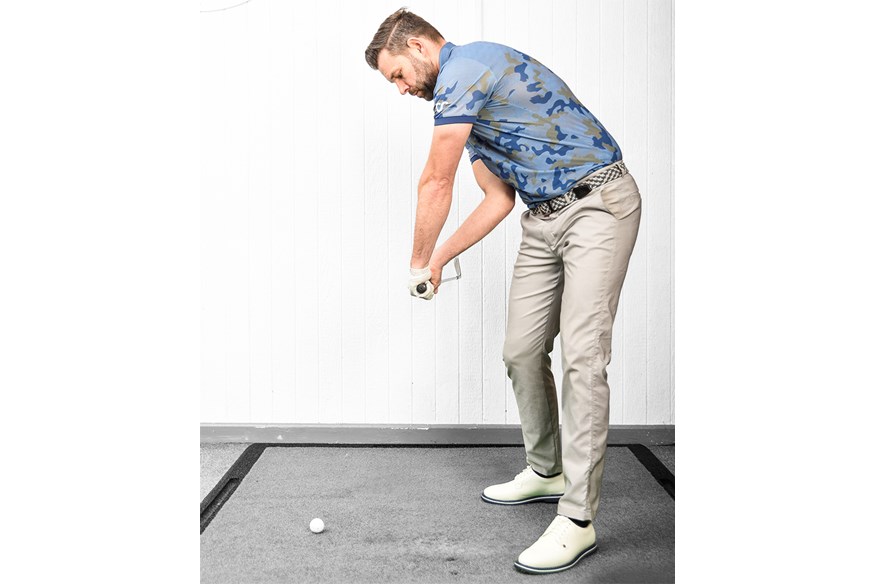
The arms – work the club into a deeper position
Good golfers deliver the club from what we might call a ‘deep’ position – that’s to say the club is well inside the ball-target line. Whatever shape they create at the top, as you watch their first moves down you see how the arms work to get the club into this deeper and shallower position – a line through the lead arm at the delivery position would point right of target for the right-hander. Later, you’ll see how this promotes a stronger and more reliable release of the club.
RELATED: Me And My Golf’s best-ever tips

The club – shaft shallows
The third element of delivery is a shaft angle that shallows from the top. This is in direct contrast to the club golfer, whose shaft typically steepens (becoming more upright) as the downswing unwinds. We’ll take a look at why the shaft angle shallows out, how it works in tandem with how an elite player releases the club, and how you can work it into your action.
The body – how the body should work in the golf swing
The main reason good golfers increase flex in their downswing is power. A lower delivery position allows them to rise and rotate through impact; as they pull the club handle upwards, the head reacts by whipping downwards, powerfully into the ball. Here’s how to train the move.
1. Set the gap
The simplest way to grasp what we mean by the body increasing flex is to set up with an umbrella or other prop set vertically behind you. Position the prop so your regular stance leaves a small gap of a couple of inches between it and your rear.
2. Maintain the gap
In an effective backswing, the set-up body angles created through the legs and spine are broadly maintained. This means that small gap is maintained… although the rotation of the trail hip can appear to close it slightly.
3. Close the gap
On the downswing, the spine angle should become more tilted forwards, with an increase in knee flex. The whole look becomes more of a squat. This movement will close the gap between your glutes and the prop you’re using.
RELATED: How to create the perfect golf grip
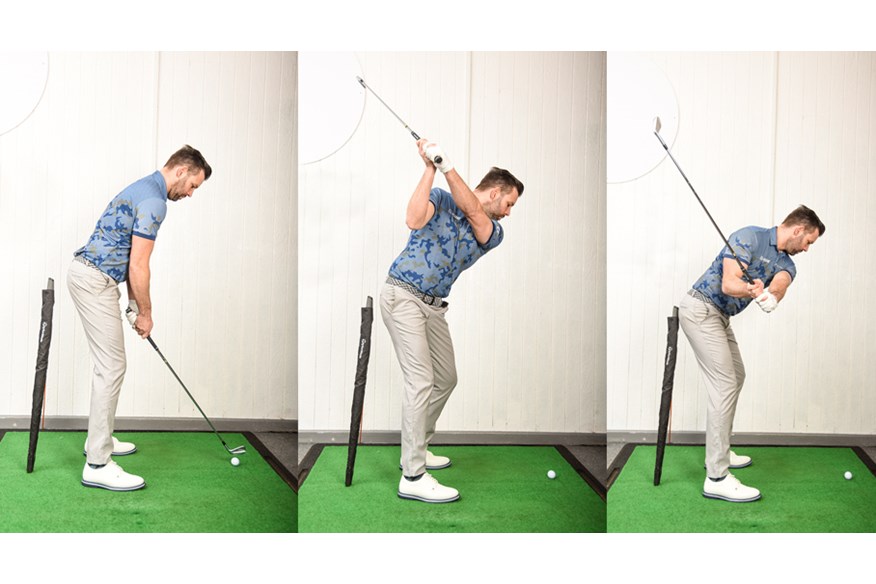
The arms – what the arms should do during the golf swing
Good players release the club with the big, powerful muscles of their core, rather than the less controllable and weaker ones in the hands and arms. Here’s how their arm action encourages that… and how you can gain a similar, stronger and more reliable release.
The lead arm moves down, not out. This shallows the shaft, encouraging core rotation
Good golfers deliver the club from what we call a ‘deep’ position – in other words, the club is well inside the ball-target line. When the club is inside the line, the golfer is forced to rotate harder through the core to get the club swinging straight through the ball. That means dynamic engagement of the big, body muscles.
Contrast this position with the move from the top many club golfers adopt, where the arms send the club outwards and more towards the ball-target line. From here, core rotation would sweep the path left (right-handers). The only option is to swing down weakly with the hands and arms.
How to train this move
The lead arm’s motion from the top is instrumental in creating this deeper delivery position, and here’s how to work on yours.
Swing to the top as normal, and hold the position. Now take your trail hand off the club and grip your lead wrist from underneath, as shown.
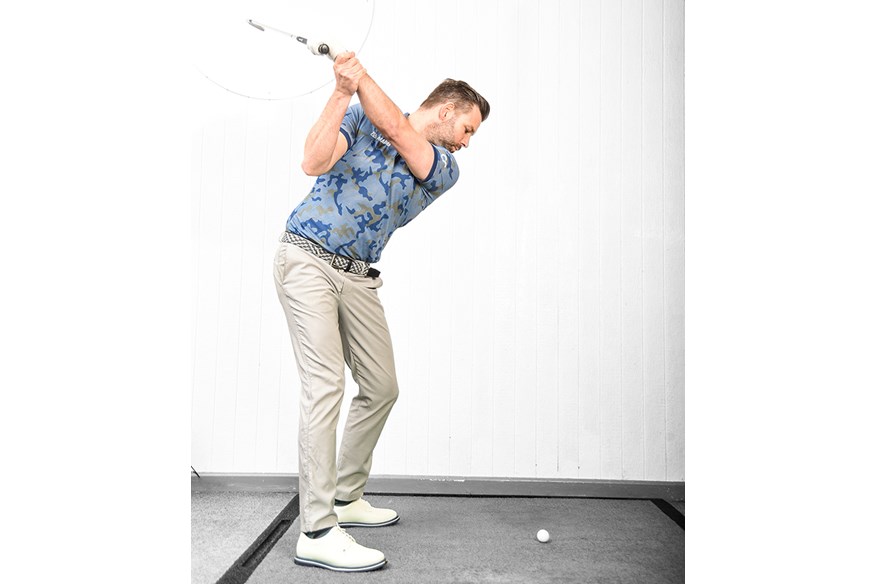
Move slowly and smoothly into your downswing. As you do this, use your trail hand to pull the lead arm downwards; avoid any tendency for it to move out towards the ball. You should feel your upper arm brush down the front of your shirt. As a check, your lead arm should point out across the line as it reaches parallel with the ground.
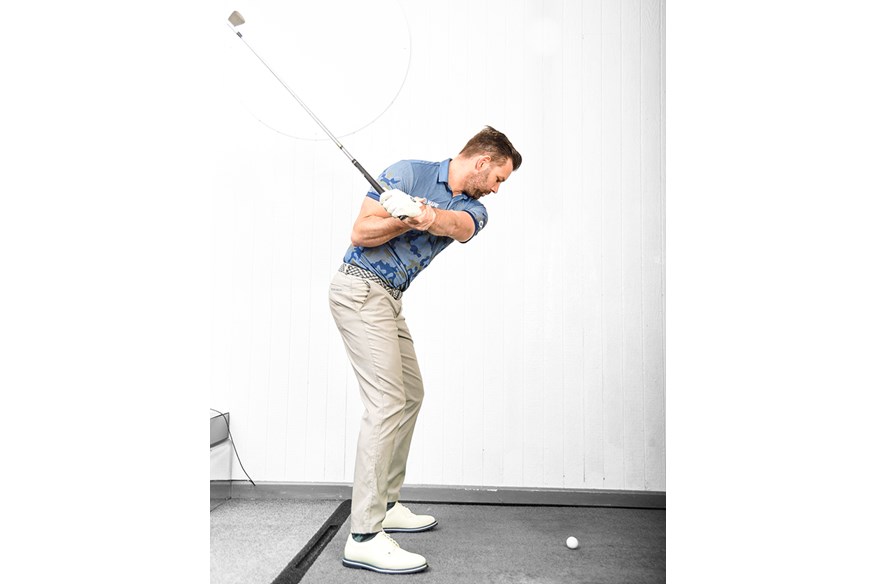
The trail arm elbow keeps moving to keep the club in a shallow and powerful position
Good: Let’s have another look at the delivery position. Note the trail elbow is pretty much in front of the trail hip; it’s kept moving forwards, from the top all the way to impact. This is an important part of keeping the club in the shallow position.
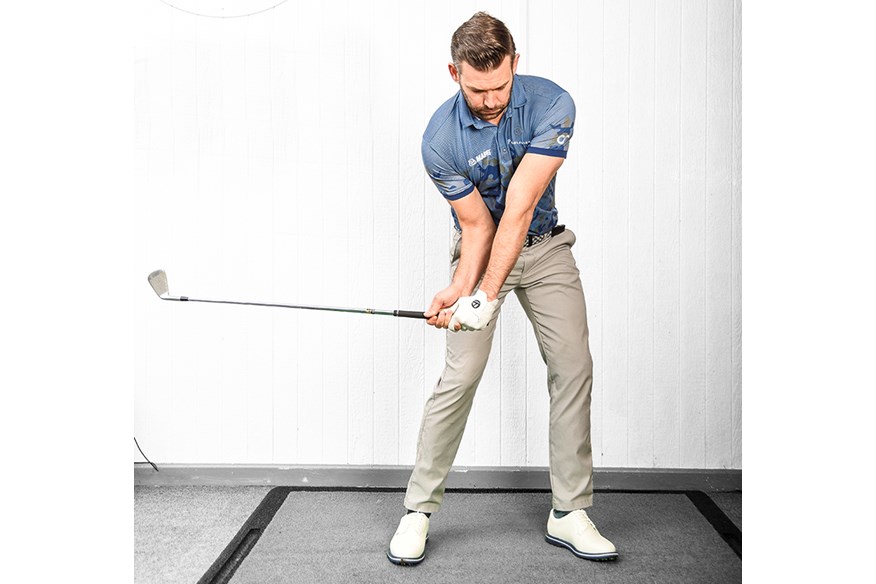
Bad: This is what happens when the trail elbow stops moving forward. The shoulder joint rotates, the hands move past the elbow and the club moves away from you and steepens. This promotes a weak, out-to-in attack and short, sliced shots.
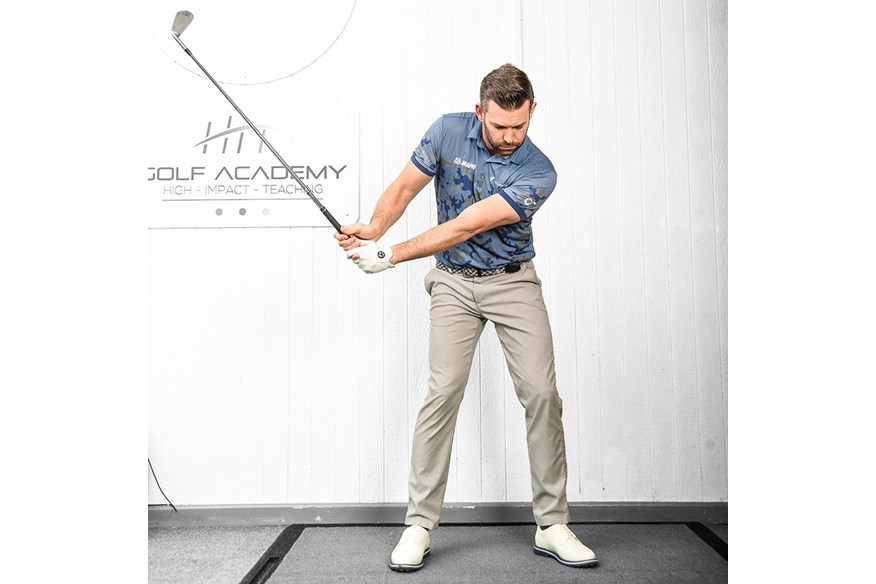
How to train this move
Address: To feel a motion that keeps that trail elbow moving, drop the club, extend your trail arm into its address position but fold the back of your lead hand behind and under the upper arm. Cup the wrist to apply pressure to the outside of the arm.
Top of backswing: Swing slowly to the top, keeping that relationship intact and feeling the back of your lead hand against the underside of your trail arm. Feel how, when you do this, the trail elbow remains in front of its shoulder.
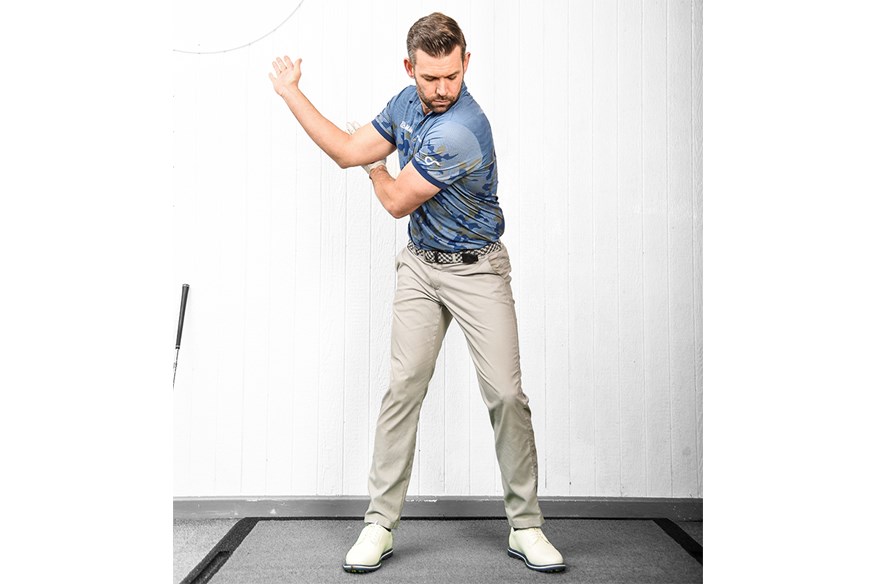
Delivery: Keeping your actions slow and controlled, move through to impact. Feel those fingers of your gloved hand dragging the elbow forwards. Move through until the elbow is in front of the hip. Repeat three times before trying it gripping a club.
RELATED: Why the harder you try, the worse you play
The club – how the golf club works in harmony with your rotation
While the club will follow the lead of the arms and body, when you can picture the space it needs to move through, you’ll boost your ability to groove the right moves… and identify the wrong ones.
The simplest way to explain the motion of the club is in terms of the steepness (more vertical) or shallowness (more horizontal) of the shaft. As we saw when we looked at the arms, top golfers move the club through a shallow plane, which works in harmony with their rotational delivery. Club players, on the other hand, get more steep. Let’s look at the club in isolation to better understand both.
Too steep
Begin by spreading your hands on the club as shown to ‘carry’ it, the lead hand at the top of the grip and the trail hand a foot or so from the head. Let’s start with the club golfer’s typically steep delivery position. Here the clubhead is positioned ‘outside’ the hands (closer to the ball-target line) and primed for a downward, out-to-in attack.
The usual – and damaging – movement pattern from this delivery position is that the golfer, sensing the steepness, tries to take it out to shallow the attack. The instinctive reaction is to straighten up to lift the handle up and away. The clubhead responds by flipping inside. This creates an awkward impact in which the golfer pushes an open face out to the ball, led by the heel.
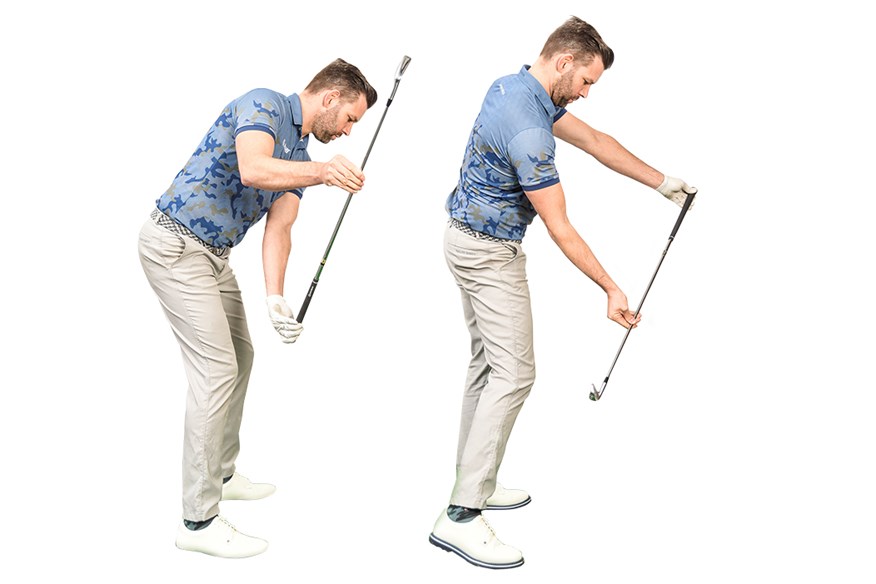
How to train this move
So far we have learned that these elite golfers make a rising, rotating move through impact that allows the big muscles to deliver the club with speed and stability. To feel how the club needs to move to match this more rotational delivery, spread your hands on the club again.
Shallow delivery: As we saw in part two, top players move their arms into a deep and shallow delivery position. The clubshaft matches this move by becoming equally shallow, the clubhead well ‘inside’ the hands. Form this position with the split grip; it doesn’t matter if you exaggerate the flatness slightly, but use your belt buckle as a broad reference for the angle of the shaft.
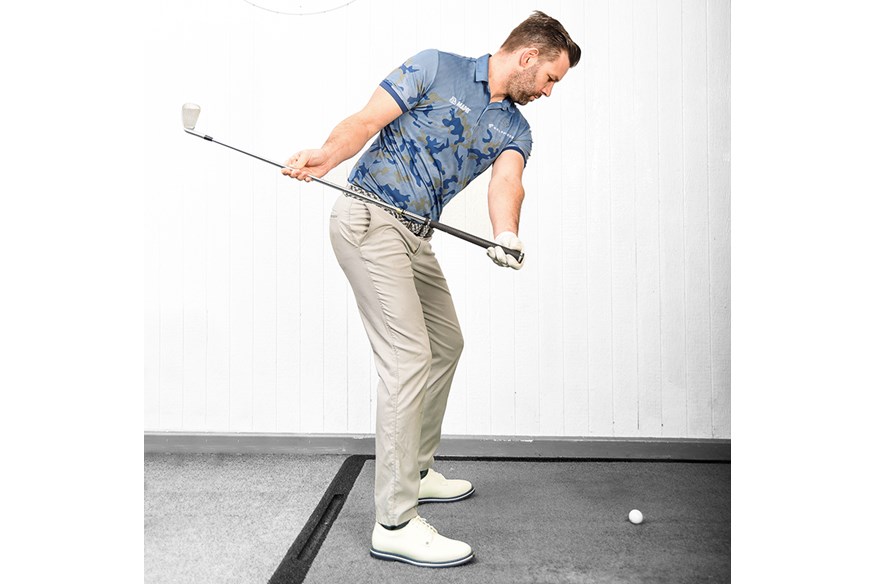
Impact = hands in, clubhead out:
From here, move the club through to an impact position. Your key thought here is to feel your gloved hand move inwards, across and up, past your lead hip. See how, when you do this, the clubhead responds by moving outwards, towards the ball. By impact the clubhead is now well ‘outside’ the hands.
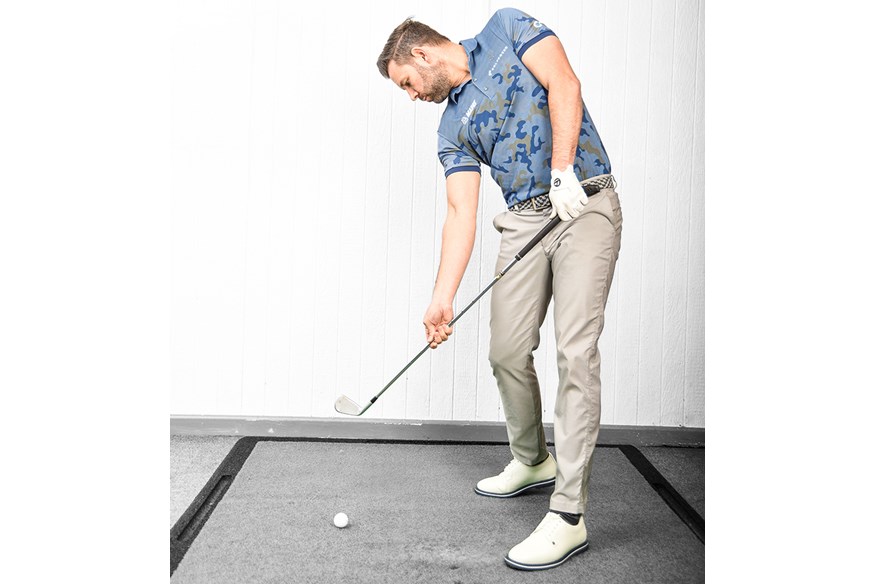
The result = more distance and more consistency
This rotational delivery – the right-hander will feel it as pulling hard left through impact – is only effective from that shallow delivery position. Pull left from a steeper position and you will send the ball well left of target or cut across it, creating a big slice.
This shallower, more rotational pattern is favoured by top players because of its ability to fire speed and stability into the club through the ball. It can do the same for you.
